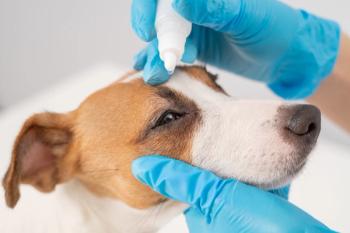
Treating struvite stones

Mark J. Acierno, DVM, MBA, DACVIM, talks about treatment for struvite stones in dogs, and the science behind this urolith formation
Fetch On-Demand delivers expert-led veterinary continuing education on your schedule. With CE on your own terms, you can access top-tier sessions anytime, anywhere—whether at home, in the clinic, or on the go. Ready to earn CE credits? Watch this session and more on
What causes struvite stones in dogs and why can managing these stones be challenging? In an interview with dvm360, Mark J. Acierno, DVM, MBA, DACVIM, professor and associate dean at Midwestern University, shared key aspects from his lecture “Canine Uroliths,” presented earlier this fall at the Fetch dvm360 conference in Atlantic City, New Jersey. He explained that struvite stones in dogs are almost always linked to urinary tract infections caused by urease-producing bacteria. When these stones are dissolved, bacteria trapped within the stones are released into the bladder. When treating struvite stones, Acierno explained, antibiotics should be utilized throughout the entire dissolution process and the patient’s pH levels should be regularly checked. In the interview, Acierno also shared additional management strategies.
Below is a partial transcript
Mark J. Acierno, DVM, MBA, DACVIM: So, for struvite, you know, in dogs, unlike cats, struvites are almost always associated with a urinary tract infection, and almost all those urinary tract infections are produced by urease-producing bacteria, which means E coli is not the culprit.
And so, the management strategy for dealing with struvite crystals is to clear the infection. Now, if we already have stones, we can cure the infection and then try to reduce the stones using a stone-dissolving diet. In dogs, it's a really long haul. It can be months, 6 months, maybe even longer in order to dissolve those stones.
With cats, we have a little bit of a different thing. Cats, you know, you can dissolve those stones in a matter of 15 or 20 days, and they're not generally associated with infections. And so, you know, dissolving them in cats is pretty much simple, but dissolving them in dogs takes long periods of time.
Newsletter
From exam room tips to practice management insights, get trusted veterinary news delivered straight to your inbox—subscribe to dvm360.




